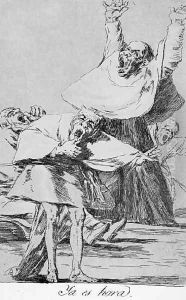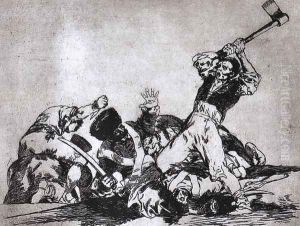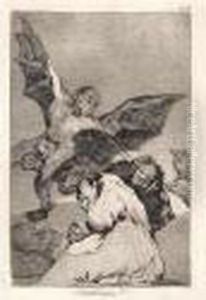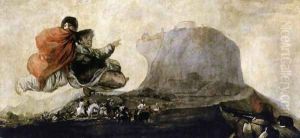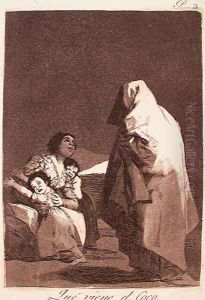





Caprichos Plate 65 Where Is Mama Going
-
About Reproduction
Discover the allure of art with our faithful reproduction of "Caprichos Plate 65 Where Is Mama Going", originally brought to life by the talented Francisco De Goya y Lucientes. Unlike posters or prints, our hand-painted oil painting breathes an unique sense of depth and texture into your space. Every detail, every stroke, and every texture is meticulously recreated, paying the perfect homage to Francisco De Goya y Lucientes and his artistic vision.
Owning this piece is more than just decoration - it's a statement of your refined taste in art. Let the vibrant colors and intricate details of this replica serve as a daily reminder of the beauty in our world. Elevate your decor and appreciate the richness of art with our replica of this masterpiece.
-
Painting Description
"Caprichos Plate 65: Where Is Mama Going?" (Spanish: "¿Dónde va mamá?") is one of the 80 etchings that make up "Los Caprichos," a series by the renowned Spanish artist Francisco de Goya y Lucientes. Created between 1797 and 1798, "Los Caprichos" was Goya's artistic endeavor to critique the social, political, and religious customs of his time. Plate 65, in particular, features a nocturnal scene where a young child, bewildered and scared, clings to a nursemaid or duenna while peering at a cloaked figure departing into the night. This figure, presumed to be the child's mother, is often interpreted as a representation of a woman of the night or a lady involved in illicit activities, leaving her child behind as she ventures into the darkness.
The etching is executed with a combination of techniques, including aquatint, etching, and burin, which Goya used to achieve a rich tonal range and dramatic effect. The series, including Plate 65, is known for its imaginative elements, satirical nature, and its departure from the purely pictorial tradition, as Goya often included captions or titles that added a narrative or interpretive layer to the images.
"Where Is Mama Going?" reflects Goya's critical eye on the moral decay and the abandonment of familial responsibilities he perceived in Spanish society. The work can be seen as a commentary on the neglect of children by the aristocracy and the upper classes, who are more concerned with their own pleasures and social engagements than with their offspring. The haunting quality of the image, with its stark contrasts of light and shadow, underscores the emotional and moral darkness of the scene depicted.
As with the other plates in the "Caprichos" series, "Where Is Mama Going?" was initially intended for a wide audience, but the provocative nature of these works led to their withdrawal from public sale shortly after their initial release. Today, "Los Caprichos" is recognized as a seminal work in the canon of Western art, and Plate 65 remains a compelling example of Goya's ability to blend artistic skill with social commentary. The series is held in high esteem not only for its aesthetic qualities but also for its insightful and often biting observations on the human condition.
-
Lead Time & Shipping
When you order this oil painting replica, it typically takes 2-3 weeks to paint. If the artwork is more complex, it might need a little more time to ensure the best quality. Once it's ready, we'll send you a photo for your approval. After you give the green light, we'll ship it to you for free.
-
Return & Refund
We believe in the quality of our hand-painted oil painting reproductions, and your satisfaction is our priority. If for any reason, you are not completely satisfied with your purchase, we offer a 45-day return policy. You can return your artwork within 45 days of receipt and receive a full refund. Please note that the artwork must be returned in the original packaging and in the same condition as it was received.







